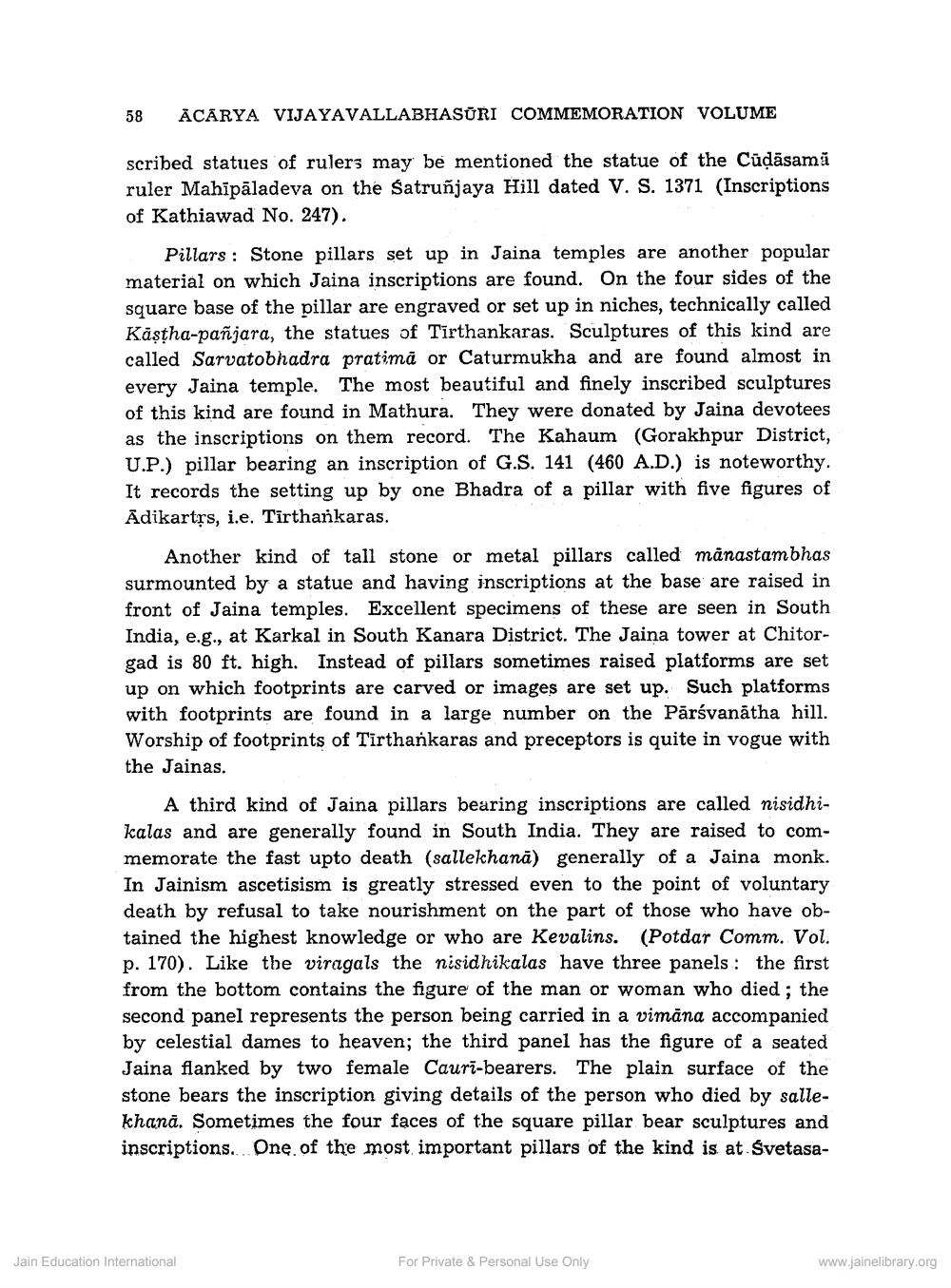Book Title: Materials Used for Jaina Inscriptions Author(s): D B Diskalkar Publisher: Z_Vijay_Vallabh_suri_Smarak_Granth_012060.pdf View full book textPage 4
________________ 58 ACARYA VIJAYAVALLABHASŪRI COMMEMORATION VOLUME scribed statues of rulers may be mentioned the statue of the Cūļāsamă ruler Mahīpāladeva on the Satruñjaya Hill dated V. S. 1371 (Inscriptions of Kathiawad No. 247). Pillars : Stone pillars set up in Jaina temples are another popular material on which Jaina inscriptions are found. On the four sides of the square base of the pillar are engraved or set up in niches, technically called Kästha-pañjara, the statues of Tirthankaras. Sculptures of this kind are called Sarvatobhadra pratimă or Caturmukha and are found almost in every Jaina temple. The most beautiful and finely inscribed sculptures of this kind are found in Mathura. They were donated by Jaina devotees as the inscriptions on them record. The Kahaum (Gorakhpur District, U.P.) pillar bearing an inscription of G.S. 141 (460 A.D.) is noteworthy. It records the setting up by one Bhadra of a pillar with five figures of Adikartęs, i.e. Tirthankaras. Another kind of tall stone or metal pillars called manastambhas surmounted by a statue and having inscriptions at the base are raised in front of Jaina temples. Excellent specimens of these are seen in South India, e.g., at Karkal in South Kanara District. The Jaina tower at Chitorgad is 80 ft. high. Instead of pillars sometimes raised platforms are set up on which footprints are carved or images are set up. Such platforms with footprints are found in a large number on the Pārsvanātha hill. Worship of footprints of Tirthankaras and preceptors is quite in vogue with the Jainas. A third kind of Jaina pillars bearing inscriptions are called nisidhikalas and are generally found in South India. They are raised to commemorate the fast upto death (sallekhana) generally of a Jaina monk. In Jainism ascetisism is greatly stressed even to the point of voluntary death by refusal to take nourishment on the part of those who have obtained the highest knowledge or who are Kevalins. (Potdar Comm. Vol. p. 170). Like the viragals the nisidhikalas have three panels : the first from the bottom contains the figure of the man or woman who died; the second panel represents the person being carried in a vimāna accompanied by celestial dames to heaven; the third panel has the figure of a seated Jaina flanked by two female Cauri-bearers. The plain surface of the stone bears the inscription giving details of the person who died by sallekhanā. Sometimes the four faces of the square pillar bear sculptures and inscriptions. One of the most important pillars of the kind is at Svetasa Jain Education International For Private & Personal Use Only www.jainelibrary.orgPage Navigation
1 2 3 4 5 6
